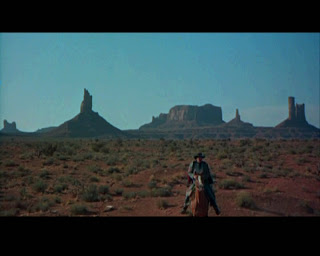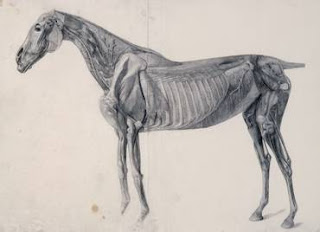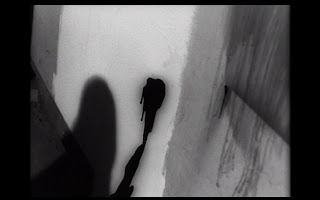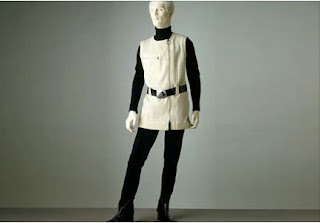This came to me through Iain Boal of Retort, and I thought I should pass it along here.
[Two open letters of support for the nine young grocer-communards arrested under the French terrorism laws in the Limousin village of Tarnac, one by the Italian theorist of permanent suspicion, and the other by the parents of the seized. IB]
On the morning of November 11, 150 police officers, most of which
belonged to the anti-terrorist brigades, surrounded a village of 350
inhabitants on the Millevaches plateau, before raiding a farm in order
to arrest nine young people (who ran the local grocery store and tried
to revive the cultural life of the village). Four days later, these nine
people were sent before an anti-terrorist judge and "accused of criminal
conspiracy with terrorist intentions." The newspapers reported that the
Ministry of the Interior and the Secretary of State "had congratulated
local and state police for their diligence."
Everything is in order, or so it would appear. But let's try to examine
the facts a little more closely and grasp the reasons and the results of
this "diligence."
First the reasons: the young people under investigation "were tracked by
the police because they belonged to the ultra-left and the anarcho
autonomous milieu." As the entourage of the Ministry of the Interior
specifies, "their discourse is very radical and they have links with
foreign groups." But there is more: certain of the suspects "participate
regularly in political demonstrations," and, for example, "in protests
against the Fichier Edvige (Exploitation Documentaire et Valorisation de
l'Information Générale) and against the intensification of laws
restricting immigration." So political activism (this is the only
possible meaning of linguistic monstrosities such as "anarcho autonomous
milieu") or the active exercise of political freedoms, and employing a
radical discourse are therefore sufficient reasons to call in the
anti-terrorist division of the police (SDAT) and the central
intelligence office of the Interior (DCRI). But anyone possessing a
minimum of political consc ience could not help sharing the concerns of
these young people when faced with the degradations of democracy
entailed by the Fichier Edvige, biometrical technologies and the
hardening of immigration laws.
As for the results, one might expect that investigators found weapons,
explosives and Molotov cocktails on the farm in Millevaches. Far from
it. SDAT officers discovered "documents containing detailed information
on railway transportation, including exact arrival and departure times
of trains." In plain French: an SNCF train schedule. But they also
confiscated "climbing gear." In simple French: a ladder, such as one
might find in any country house.
Now let's turn our attention to the suspects and, above all, to the
presumed head of this terrorist gang, "a 33 year old leader from a
well-off Parisian background, living off an allowance from his parents."
This is Julien Coupat, a young philosopher who (with some friends)
formerly published Tiqqun, a journal whose political analyses – while no
doubt debatable – count among the most intelligent of our time. I knew
Julien Coupat during that period and, from an intellectual point of
view, I continue to hold him in high esteem.
Let's move on and examine the only concrete fact in this whole story.
The suspects' activities are supposedly connected with criminal acts
against the SNCF that on November 8 caused delays of certain TGV trains
on the Paris-Lille line. The devices in question, if we are to believe
the declarations of the police and the SNCF agents themselves, can in no
way cause harm to people: they can, in the worst case, hinder
communications between trains causing delays. In Italy, trains are often
late, but so far no one has dreamed of accusing the national railway of
terrorism. It's a case of minor offences, even if we don't condone them.
On November 13, a police report prudently affirmed that there are
perhaps "perpetrators among those in custody, but it is not possible to
attribute a criminal act to any one of them."
The only possible conclusion to this shadowy affair is that those
engaged in activism against the (in any case debatable) way social and
economic problems are managed today are considered ipso facto as
potential terrorists, when not even one act can justify this accusation.
We must have the courage to say with clarity that today, numerous
European countries (in particular France and Italy), have introduced
laws and police measures that we would previously have judged barbaric
and anti-democratic, and that these are no less extreme than those put
into effect in Italy under fascism. One such measure authorizes the
detention for ninety-six hours of a group of young – perhaps careless –
people, to whom "it is not possible to attribute a criminal act."
Another, equally serious, is the adoption of laws that criminalize
association, the formulations of which are left intentionally vague and
that allow the classification of political acts as having terrorist
"intentions" or "inclinations," acts that until now were never in
themselves considered terrorist.
Giorgio Agamben
19 xi 08
Letter from the parents of the Tarnac 9
Dimanche, 23 Novembre 2008
Lorsque la cacophonie s'accorde pour traîner dans la boue une poignée de jeunes emmurés, il est très difficile de trouver le ton juste qui fasse cesser le vacarme; laisser place à plus de vérité.
Certains médias se sont empressés d'accréditer la thèse affirmée par la ministre de l'intérieur dans sa conférence de presse, alors que les perquisitions étaient en cours : les personnes arrêtées étaient d'emblée condamnées.
Personne n'aura pu rater l'épisode de "police-réalité" que nous avons tous subi la semaine passée. L'angoisse, la peur, les pleurs nous ont submergés et continuent à le faire. Mais ce qui nous a le plus blessés, le plus anéantis, ce sont les marées de mensonges déversées. Aujourd'hui ce sont nos enfants, demain ce pourraient être les vôtres.
Abasourdis, nous le sommes encore, paralysés nous ne le sommes plus. Les quelques évidences qui suivent tentent de rétablir la vérité et de faire taire la vindicte.
Les interpellés ont à l'évidence bénéficié d'un traitement spécial, enfermés pendant 96 heures, cela devait faire d'eux des personnes hors normes. La police les suspecte d'être trop organisés, de vouloir localement subvenir à leurs besoins élémentaires, d'avoir dans un village repris une épicerie qui fermait, d'avoir cultivé des terres abandonnées, d'avoir organisé le ravitaillement en nourriture des personnes agées des alentours. Nos enfants ont été qualifiés de radicaux. Radical, dans le dictionnaire, signifie prendre le problème à la racine. A Tarnac, ils plantaient des carottes sans chef ni leader. Ils pensent que la vie, l'intelligence et les décisions sont plus joyeuses lorsqu'elles sont collectives.
Nous sommes bien obligés de dire à Michelle Alliot Marie que si la simple lecture du livre "L'insurrection qui vient" du Comité Invisible fait d'une personne un terroriste, à force d'en parler elle risque de bientôt avoir à en dénombrer des milliers sur son territoire. Ce livre, pour qui prend le temps de le lire, n'est pas un "bréviaire terroriste", mais un essai politique qui tente d'ouvrir de nouvelles perspectives.
Aujourd'hui, des financiers responsables de la plus grosse crise économique mondiale de ces 80 dernières années gardent leur liberté de mouvement, ne manquant pas de plonger dans la misère des millions de personnes, alors que nos enfants, eux, uniquement soupçonnés d'avoir débranchés quelques trains, sont enfermés et encourent jusqu' à 20 ans de prison.
L'opération policière la plus impressionante n'aura pas été de braquer cagoulé un nourrisson de neuf mois en plein sommeil mais plutôt de parvenir à faire croire que la volonté de changer un monde si parfait ne pouvait émaner que de la tête de détraqués mentaux, assassins en puissance.
Lorsque les portes claquent, nous avons peur que ce soient les cagoules qui surgissent. Lorsque les portent s'ouvrent, nous rêvons de voir nos enfants revenir.
Que devient la présomption d'innocence?
Nous demandons qu'ils soient libérés durant le temps de l'enquête et que soient evidemment abandonnée toute qualification de terrorisme.
PS: Nous tenons à saluer et à remercier les habitants de Tarnac qui préfèrent croire ce qu'ils vivent que ce qu'ils voient à la télé.


















































